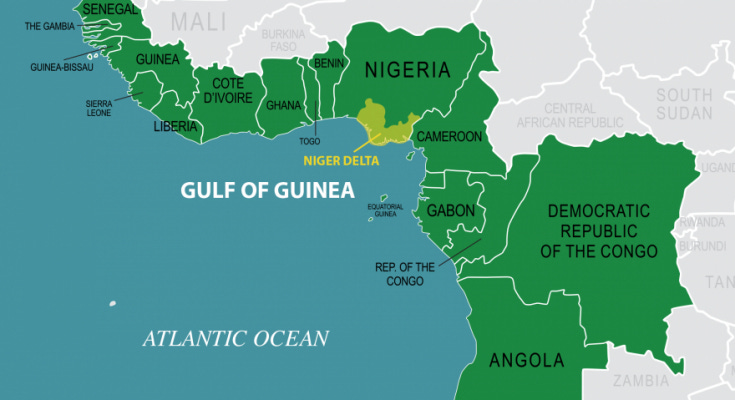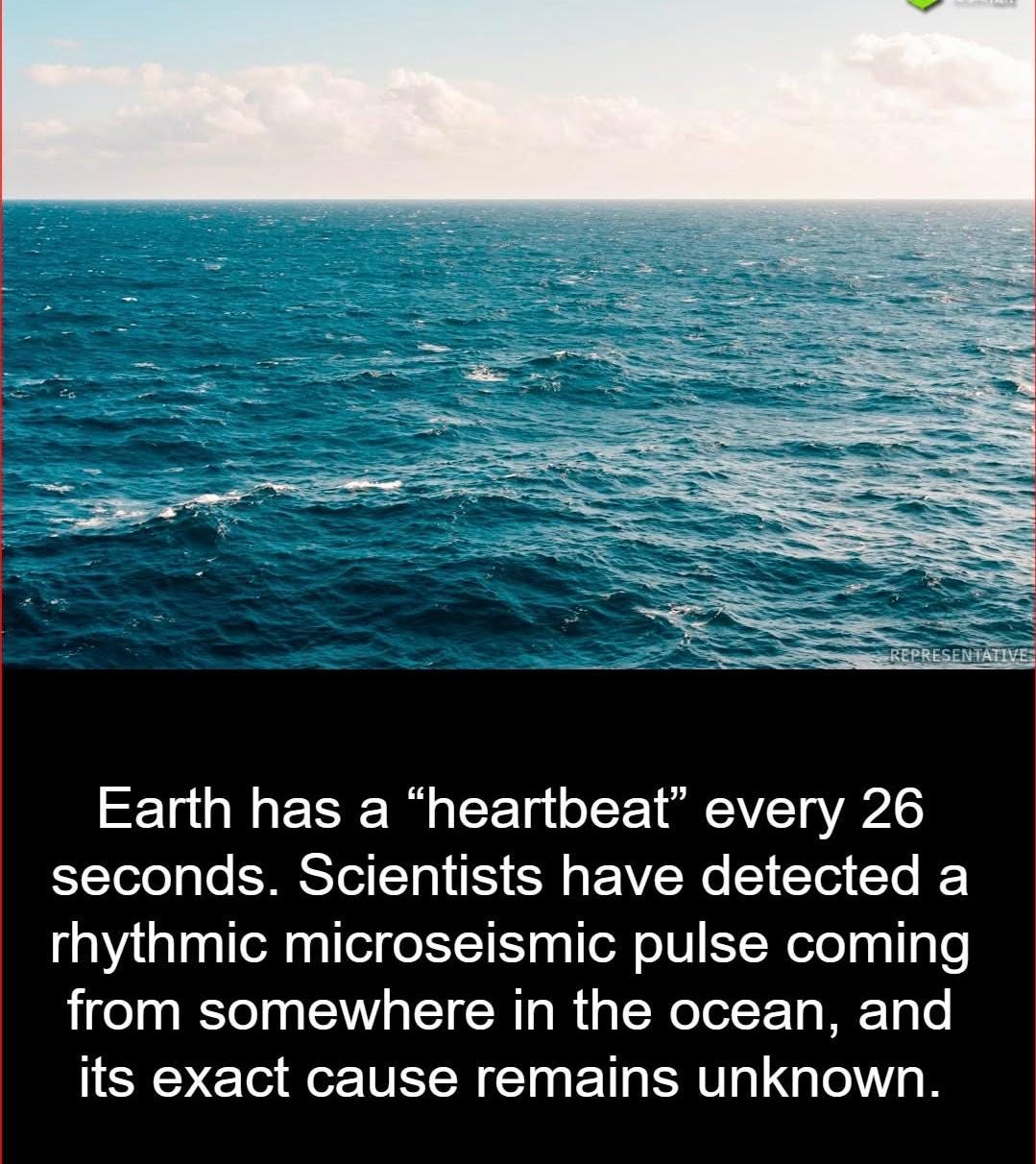What Makes Our Earth Beat Every 26 Seconds from the Core of its Heart?
Unravelling the Mystery of the Planet’s Persistent and Perfectly Periodic Seismic Pulse.
Introduction: The Persistent Pulse Beneath Our Feet
On the occasion of Earth Day today, we are reminded of the intricate, often unseen systems that sustain and animate our planet. Deep within the Earth’s crust, an enigmatic rhythm pulses with unwavering regularity — a seismic heartbeat that repeats every 26 seconds. Though imperceptible to our senses, this subtle tremor resonates across continents, emanating from the depths of the Gulf of Guinea. For decades, scientists have marvelled at this phenomenon, likening it to the very pulse of our planet. Its consistency, origin, and mechanism remain partially veiled in mystery, offering a captivating glimpse into the hidden orchestration of Earth’s internal processes.
The Discovery: Echoes from the Atlantic
The 26-second seismic pulse was first identified in the early 1960s by Jack Oliver at Columbia University’s Lamont-Doherty Geological Observatory. While examining seismic records, Oliver noticed an unusually regular microseism — distinct from tectonic tremors — that seemed to beat with metronomic precision. It occurred roughly every 26 seconds, day and night, with a consistency unmatched by known geophysical phenomena.
Initially treated as an anomalous footnote, the pulse garnered renewed scientific attention in the 1980s, when Gary Holcomb of the United States Geological Survey observed that it intensified during prolonged periods of microseismic activity, termed “seismic storms.” This amplification hinted at a deeper, more complex mechanism and encouraged more detailed investigations into its origin.
Triangulating the Source: A Breakthrough in 2005
A major advance came in 2005, when Greg Bensen and researchers at the University of Colorado triangulated the signal’s origin to the Gulf of Guinea, off Africa’s western coast. By 2011, seismologist Garrett Euler had narrowed the location further to the Bight of Bonny — also known as the Gulf of Biafra — a region marked by unique underwater geography and tectonic features. Though this helped localise the source, the pulse’s persistent rhythm remained unexplained.
Nature of the Signal: Subtle but Global
The pulse takes the form of a low-frequency microseism with a period of approximately 26 seconds, corresponding to a frequency of 0.038 Hz. Despite its modest amplitude, the signal is globally detectable — most notably in West Africa, North America, and parts of Europe. Its reliability and global propagation underscore the potency of the energy involved and the sensitivity of contemporary seismic instrumentation.
Recent advances have revealed even more intricacies. A 2023 Nature study identified “frequency glides” accompanying the primary signal — subtle shifts in the spectrum that originate from the same fixed point in the Gulf of Guinea. These spectral anomalies add further texture to the pulse and may provide critical insights into its underlying mechanics.
Exploring Theories: Searching for Answers
1. Wave-Seafloor Interaction Theory
The leading explanation attributes the pulse to ocean waves interacting with the continental shelf in the Gulf of Guinea. As powerful waves crash against the seabed in shallow waters, they exert periodic pressure on the ocean floor. This rhythmic deformation generates microseisms that can propagate through the Earth's crust. The particular bathymetry and coastline geometry of the Gulf appear uniquely conducive to producing a highly regular signal, setting it apart from similar phenomena observed elsewhere.
2. Volcanic Resonance Theory
A competing hypothesis, championed by Yingjie Xia from the Institute of Geodesy and Geophysics in Wuhan, posits a volcanic origin. The Bight of Bonny lies near São Tomé, an island with documented volcanic activity. Xia drew parallels to the Aso Volcano in Japan, which emits similar microseisms, suggesting that subterranean volcanic or hydrothermal activity may be responsible.
Further developments of this theory propose a sealed, layered hydrothermal system — potentially with a fractured plug — that could emit regular gas or pressure pulses. This structure could naturally resonate at a frequency of 26 seconds, creating a mechanical metronome deep beneath the ocean floor.
3. Hybrid and Sediment-Based Models
Given the complexity of the phenomenon, some researchers advocate for a hybrid explanation. Charlotte Bruland suggests that ocean wave dynamics may initiate the signal, while deeper geophysical mechanisms act as stabilisers, ensuring its consistency. The discovery of frequency glides further complicates the picture, blurring distinctions between oceanic and volcanic signatures.
Another intriguing model comes from Lars Eivind Augland, who proposes that water-saturated sediment layers beneath the seafloor may experience cyclical pressure build-up and release. This sediment-based oscillator could work in tandem with surface forces, creating a resonant system that amplifies and maintains the 26-second rhythm.
Why It Matters: A Puzzle Worth Solving
Although the 26-second pulse presents no threat to life or infrastructure, its scientific value is immense. It stands at the crossroads of oceanography, seismology, and volcanology — offering a rare opportunity to study how energy moves across the ocean-crust interface, and how subterranean systems can sustain rhythmic activity over long durations.
In an era where missions to Mars and beyond dominate scientific headlines, this terrestrial mystery reminds us that the Earth still guards secrets as profound as any in outer space. Understanding the pulse could improve our knowledge of Earth's internal structure and energy transfer mechanisms — insights with wide-reaching implications for both science and technology.
Original Observation: Numerical Coincidence and Mathematical Rhythm
To the best of my knowledge, my original observation that the number of times the 26-second seismic pulse occurs in a day (~3323) is remarkably close to a product involving a power of two — specifically, 26 × 128 = 3328, where 128 = 2⁷ — has not been previously noted in scientific literature. This numerical coincidence, while likely incidental, evokes the intriguing intersection between natural rhythms and mathematical patterns. Although no direct physical implication is inferred, the alignment serves as a poetic testament to the hidden symmetries within Earth’s behaviour. It is, to the best of my understanding, an original contribution to the discourse surrounding this enduring geophysical curiosity.
Conclusion: The Beat That Persists
Since its humble identification in the 1960s, the Earth’s 26-second pulse has persisted with unwavering fidelity, marking time beneath the feet of generations. From the depths of the Gulf of Guinea, this tremor radiates outward, bearing silent witness to the planet’s inner cadence. While wave-seafloor interactions remain the most plausible explanation, the door remains open to volcanic and sedimentary influences — or a confluence of them all.
As technology evolves and data accumulates, science may one day unveil the full story behind this rhythmic signal. On this Earth Day, as we pause to reflect on the planet’s beauty, fragility, and mystery, the 26-second pulse reminds us of the enduring rhythms that quietly sustain our world. Until then, the Earth continues to pulse — steady, deliberate, and mysterious — inviting us to listen closer to the quiet wonders beneath our very soles, or within our souls.






